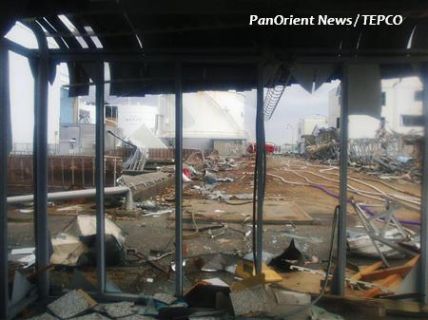|
|
Environment
Radioactive Strontium Detected in Yokohama
Thursday, October 13, 2011

High Radiation Levels Detected in Tokyo's Setagaya Ward
Tokyo- (PanOrient News) Radioactive strontium exceeding normal quantities has been detected in sediment from atop an apartment building in Yokohama, , south of Tokyo, and radiation levels as high as 2.707 microsieverts per hour have been detected on a local sidewalk in Tokyo's Setagaya Ward, Japanese media reported.
The strontium 90 was detected in Yokohama, some 250 kilometers from the damaged Fukushima Daiichi nuclear power plant, by a private agency that conducted the test upon the request of a resident. This is the first time strontium at a concentration of over 100 becquerels per kilogram has been found beyond 100 km from the Fukushima plant.
While the discovery of 195 becquerels of strontium 90 in the rooftop sediment has fueled concerns that leaked radiation may have spread further than the government had expected, the officials said the city office is carefully examining where the material came from, Kyodo reported.
Strontium 90 has been detected at concentrations roughly between 10 to 20 becquerels at various places across Japan prior to the nuclear crisis triggered by the March 11 earthquake and tsunami.
The Yokohama city said it is now investigating soil samples collected from areas near the building.
Meanwhile, the Ministry of Education, Culture, Sports, Science and Technology said it is still uncertain whether the strontium had come from the Fukushima nuclear accident. The ministry said it has detected radioactive strontium at various locations in Fukushima and Miyagi prefectures within 100 km from the crippled plant in earlier investigations following the accident.
Strontium-90 is a radioactive form of strontium, and is formed in nuclear reactors or during the explosion of nuclear weapons. The half-life of strontium-90 (the time it takes for half of the strontium to give off its radiation and change into another substance) is 29 years. It is considered a cancer-causing substance because it damages the genetic material (DNA) in cells, according to the Agency for Toxic Substances and Disease Registry..
In adults, strontium mostly attaches to the surfaces of bones. In children, strontium may create the hard bone mineral itself, thus being stored in the bones for many years. Eventually, strontium will dissolve from the bones and return to the blood to be used again to grow bone, or to be expelled through urine, waste matter or sweat. The harmful effects of strontium-90 are caused by the high energy effects of radiation.
Since radioactive strontium is taken up into bone, the bone itself and nearby soft tissues may be damaged by radiation released over time. Bone marrow is the most important source of red blood cells, which are depleted if the strontium-90 level is too high. Problems from lowered red blood cell counts include anemia, which causes excessive tiredness, blood that does not clot properly, and a decreased resistance to fight disease.
Meanwhile, officials of Setagaya Ward, west of Tokyo, said Wednesday that radiation levels as high as 2.707 microsieverts per hour have been detected on a local sidewalk. The reading was taken in the Tsurumaki 5-chome area of the western Tokyo ward after being told by a resident that a local place had high radiation levels.
The reading means that if a person were to stay close to the sidewalk for eight hours a day for an entire year, his or her cumulative annual radiation dose could reach 14.2 millisieverts, compared with the government-set limit of 20 millisieverts a year. The Setagaya government said it plans to keep the area near the sidewalk off-limits and it is considering decontamination measures.
PanOrient News
© PanOrient News All Rights Reserved.
|
|